With a population of 100,000, Tartu is the second largest town in Estonia and home to one of Northern Europe’s oldest universities. The name of the city was first mentioned in the year 1030. Therefore Tartu is the oldest city in the Baltic States. Recently Tartu was elected to be the European Capital of Culture in 2024. For a small city like Tartu, there’s an abundance of highly varied street art. In addition, there is always something on from theatre performances to concerts and festivals. Here is my selection of the top things to see in Tartu. You will likely start your visit to the city from Tartu Town Hall Square.
Tartu Town Hall Square
It is the trapeze-shaped central square of the city, surrounded by classical buildings. In the 18th century, the square was the location of the most important market in the city, der Grosse Markt, or the Great Market. Every day you can hear bells ringing from the tower of the Town Hall. Its 18 bells were forged in the bell foundry in Karlsruhe, Germany, and 16 bells were cast at the Royal Eijsbouts Belfry in the Netherlands. The carillon in Tartu is now the biggest in Estonia, with 34 bells altogether.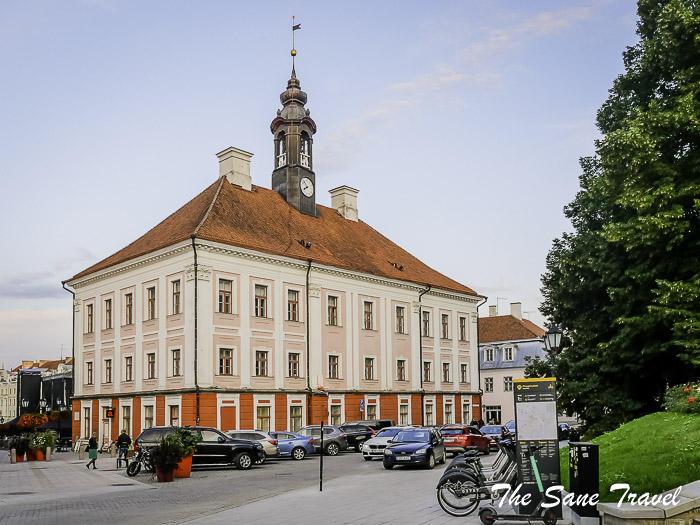 'The Kissing Students' sculpture and fountain located at the square is one of the most recognised symbols of Tartu.
'The Kissing Students' sculpture and fountain located at the square is one of the most recognised symbols of Tartu.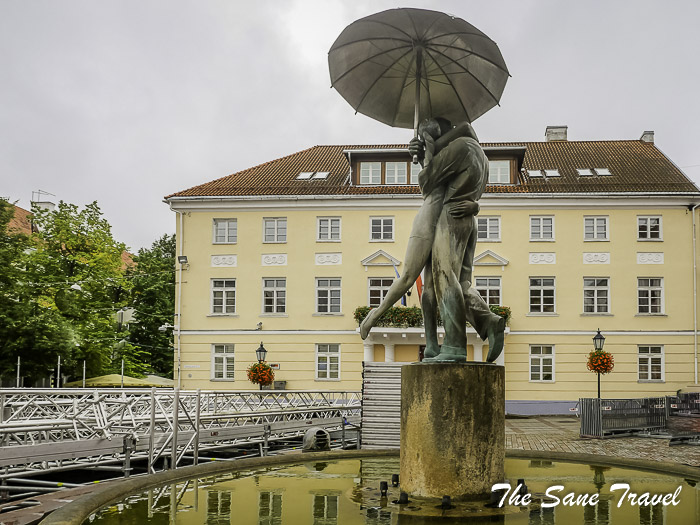 It is surrounded by tiles bearing the names of Tartu's sister cities – Bærum, Deventer, Ferrara, Fredriksberg, Hafnarfjörður, Hämeenlinna, Kaunas, Lüneburg, Pihkva, Riia, Salisbury, Tampere, Turu, Uppsala, Veszprem, and Zutphen.
It is surrounded by tiles bearing the names of Tartu's sister cities – Bærum, Deventer, Ferrara, Fredriksberg, Hafnarfjörður, Hämeenlinna, Kaunas, Lüneburg, Pihkva, Riia, Salisbury, Tampere, Turu, Uppsala, Veszprem, and Zutphen.
The Leaning House of Tartu
The Leaning House of Tartu, also called the Pisa Tower of Tartu, was built next to the medieval city wall at the end of the 18th century. The house has been slanted by 5.8 degrees due to the banks of the marshy River Emajegi. This means that the house is more tilted than the Pisa Tower. Popular Estonian writer Oskar Luts worked as a chemist in the pharmacy located in this building at the beginning of the 20th century. The permanent exhibition of Estonian Art of the Tartu Museum of Art is open in the building.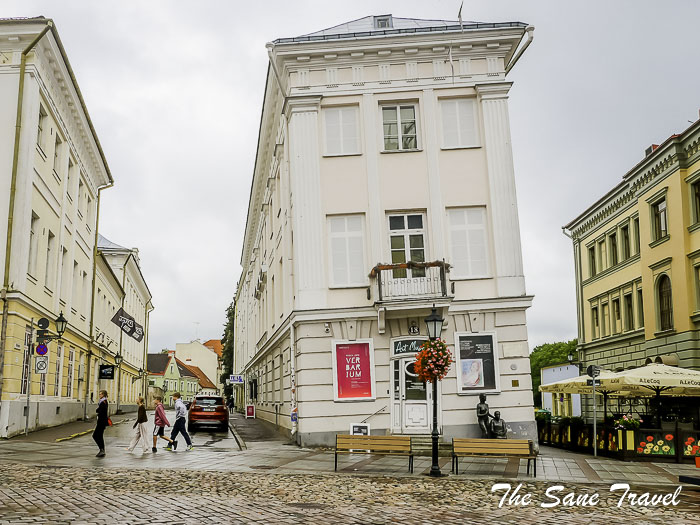
Take a look at statues of two women in front of the building. ‘Countrywomen’ is a group of sculptures by sculptor Mare Mikofi. It depicts two women, the older one sitting and being content and exhausted, and the other, the younger, standing beside her, empathetically holding her arm around the older woman’s shoulder.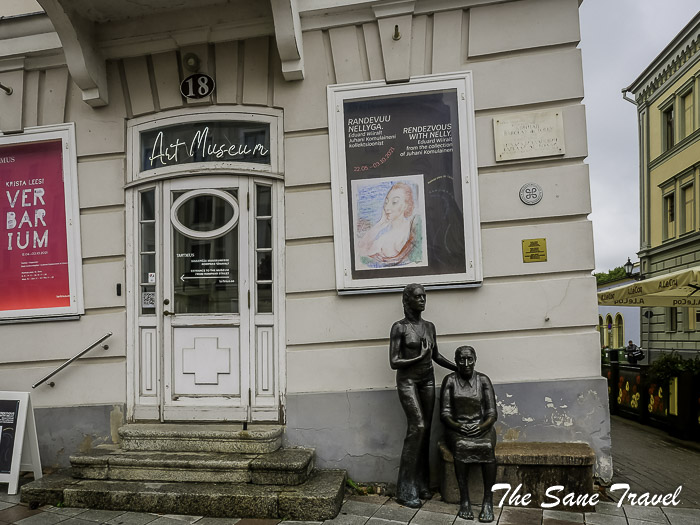
The University of Tartu
The University of Tartu is the largest and most comprehensive university in Estonia and one of the most respectable centres of education and research in Central and Eastern Europe. 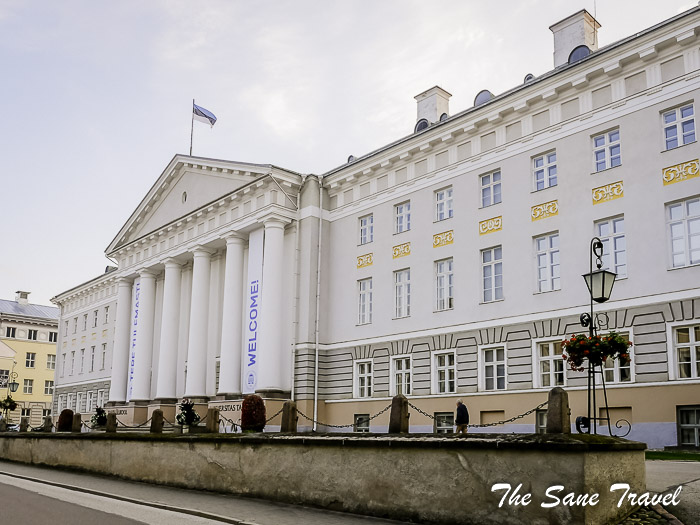 Founded in 1632 by King Gustavus Adolphus of Sweden, it belongs to the top 1.2% of the world's best universities.
Founded in 1632 by King Gustavus Adolphus of Sweden, it belongs to the top 1.2% of the world's best universities.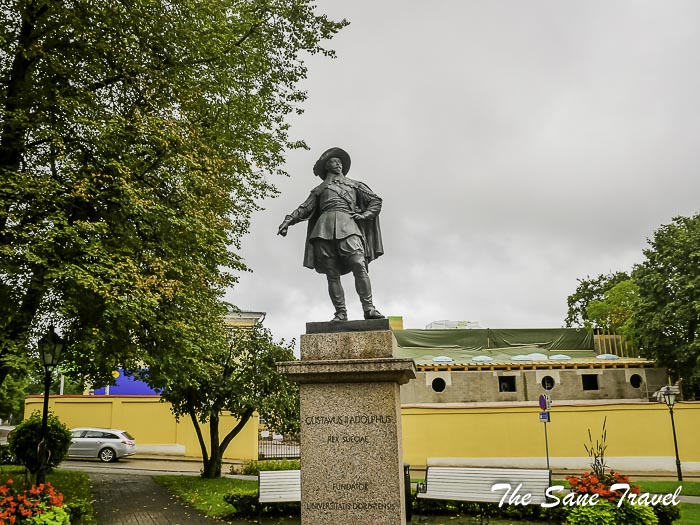 There are 14,000 students in the university, including 1,800 international students from more than 100 countries. The Main Building of the University is a gem of classical architecture. The building was constructed in the early 19th century according to the designs of Johann Wilhelm Krause.
There are 14,000 students in the university, including 1,800 international students from more than 100 countries. The Main Building of the University is a gem of classical architecture. The building was constructed in the early 19th century according to the designs of Johann Wilhelm Krause.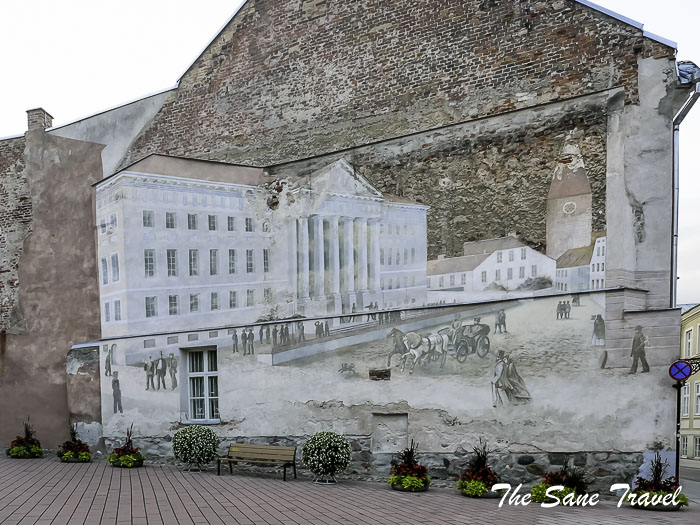
St. John’s Church
Tartu St. John’s Church, built in the 14th century in the Gothic style, is one of the oldest in Estonia; moreover, it is unique in Europe due to its many original terracotta sculptures.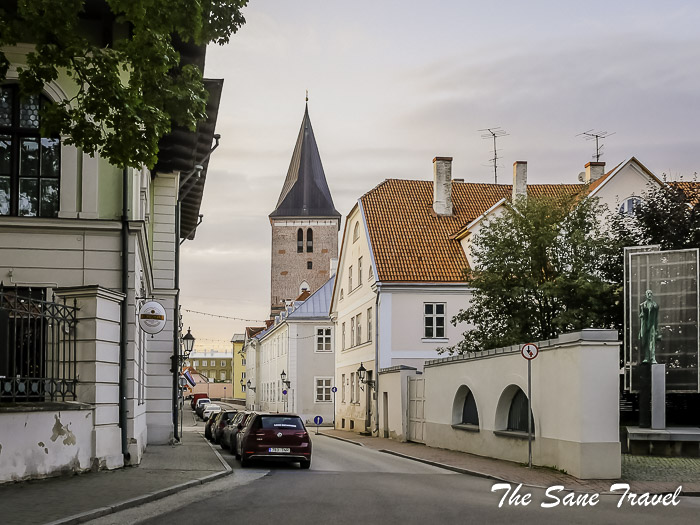 Today, almost 1,000 terracotta sculptures survive, their age reaching nearly 700 years. You are welcome to enjoy the spectacular views of the historical Old Town of Tartu from viewing platforms of St. John’s Church; you can also visit the arts and crafts shop there.
Today, almost 1,000 terracotta sculptures survive, their age reaching nearly 700 years. You are welcome to enjoy the spectacular views of the historical Old Town of Tartu from viewing platforms of St. John’s Church; you can also visit the arts and crafts shop there.
The Theatre house of the Toy Museum
Theatre House is situated on Lutsu Street 2 in the old town of Tartu, in a nicely renovated 18th century wooden building. This unique theatre belongs to Tartu Toy Museum and gets its inspiration from our childhood, games and memories, dreams and fantasies. Theatre House is a theatre inspired by a museum. 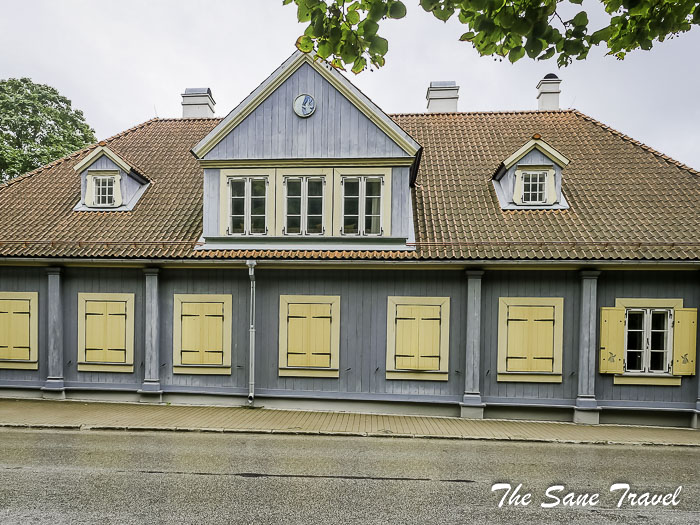
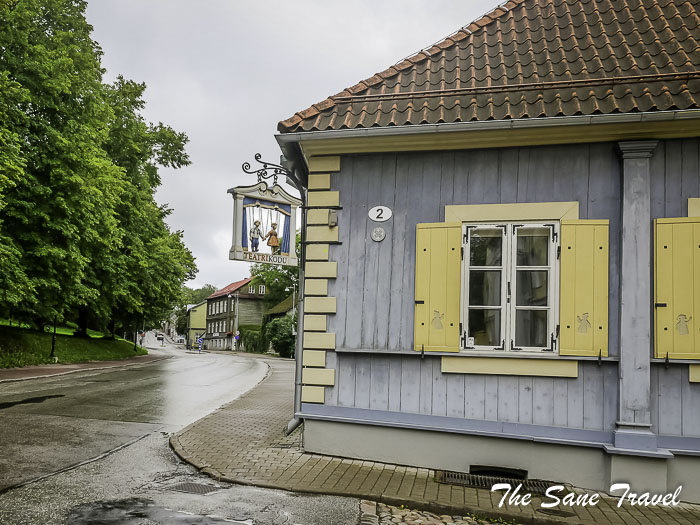
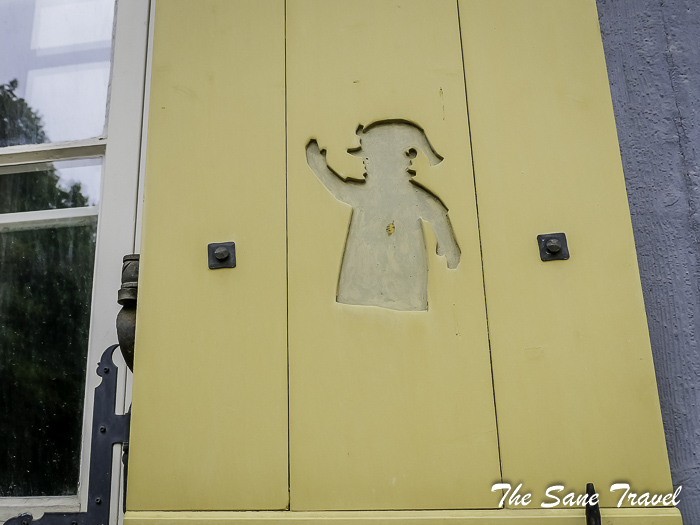 In addition to Theatre House, you can also visit the Toy Museum, where you may see old toys and dolls throughout the ages and play in the playroom. There is enough to see and do both in Theatre House and Toy Museum for everyone.
In addition to Theatre House, you can also visit the Toy Museum, where you may see old toys and dolls throughout the ages and play in the playroom. There is enough to see and do both in Theatre House and Toy Museum for everyone.
Toome Hill with Cathedral ruins
The land of Toome Hill was a gift from Emperor Paul I of Russia to the University of Tartu. It had been used previously by the locals as the pastures for their cattle. In the early decades of the 19th century, the land was turned into a public park with alleys of trees, roads, and bridged streams. Along with the anatomical theatre, observatory, and clinic, it formed the intellectual focal point of Tartu. Tartu Cathedral, located on the beautiful Toome Hill, was one of the largest churches in Estonia. It is also the only medieval church with two spires in Estonia. The construction of the church started in the 13th century and was completed at the beginning of the 16th century. The church was destroyed in the Livonian War at the end of the 16th century. Since then, it has not operated as a church. The ruins of the Tartu Cathedral are one of the most prominent examples of brick-Gothic buildings in Old Livonia.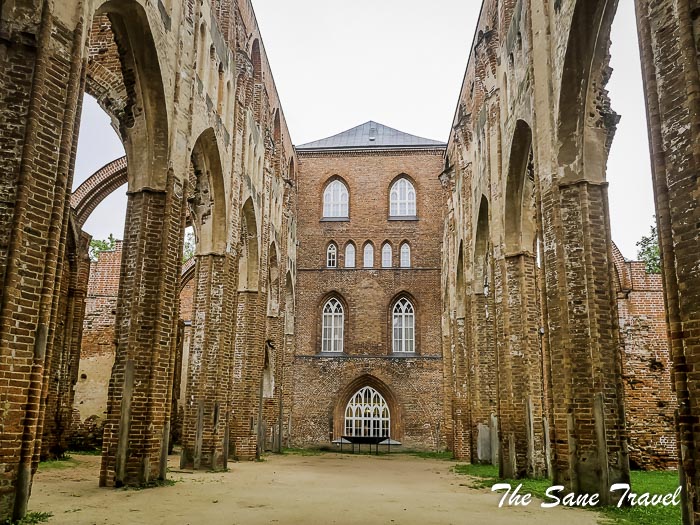
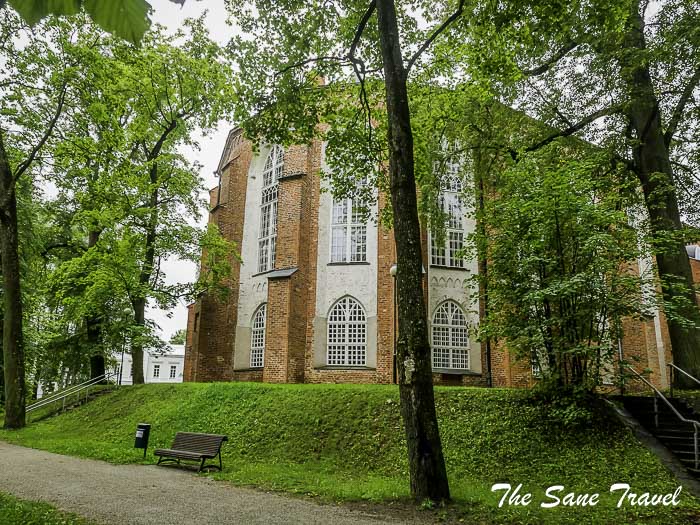
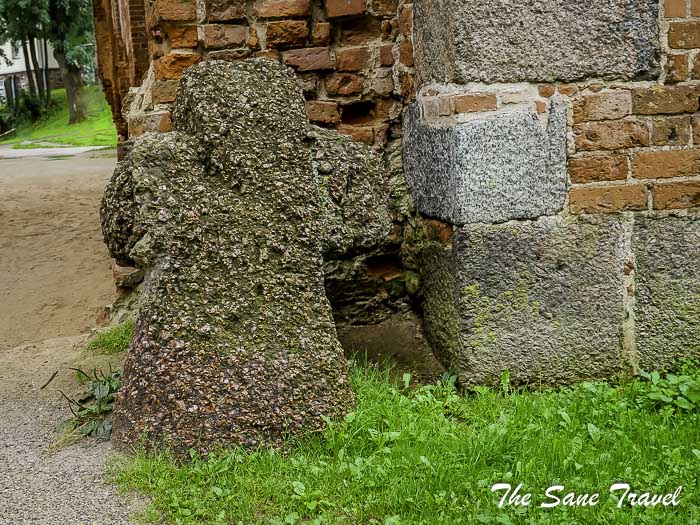
Street art of Tartu
Tartu is known as the capital of Estonian street art. As street art in Tartu is created in co-operation with the city government, it adds a special and unique touch to the murals in the heart of the city. The annual street art festival "Stencibility" has been organised in Tartu already since 2010. Local and foreign artists take part in this event. The festival’s programme is diverse, featuring an art contest, a photo competition, workshops, and drawing joint works on large walls. One of the most famous street artists in Tartu is the mysterious Edward von Lõngus, or Estonia’s own Banksy, whose works can be found on many walls. Edward von Lõngus mainly performs his work in stencil technique, using themes and symbols from Estonian culture, politics, and history.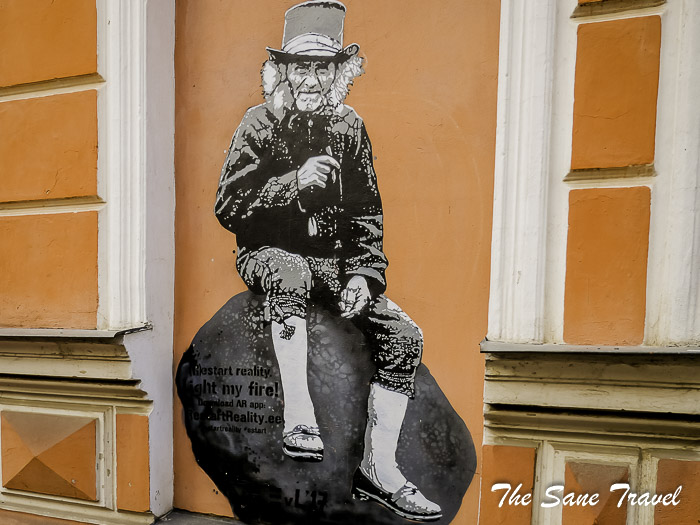
 In order to find all the masterpieces of city street art, take a look at the map of Tartu’s street art, where all the locations of images found in the city centre are marked.
In order to find all the masterpieces of city street art, take a look at the map of Tartu’s street art, where all the locations of images found in the city centre are marked. 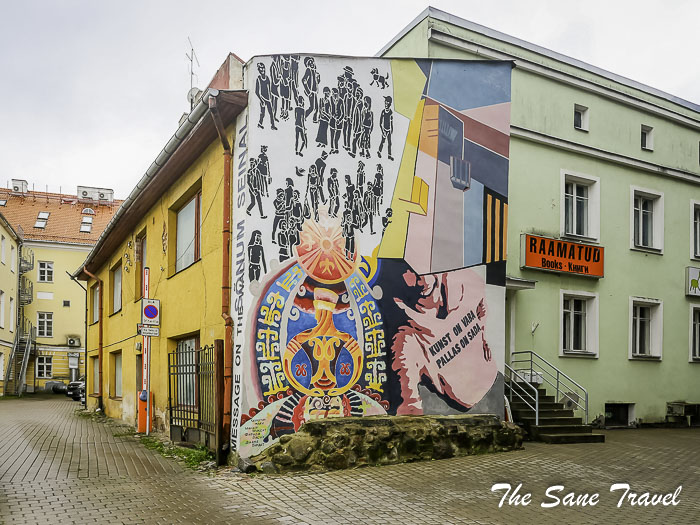
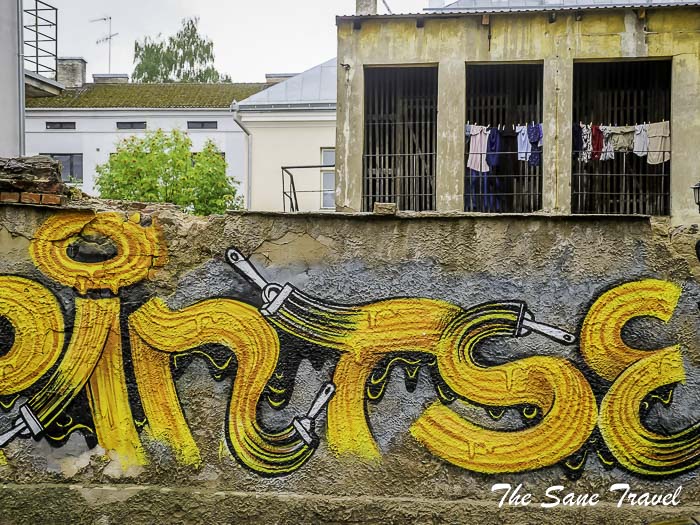 Remember to look for street art under the bridges crossing the Emajegi River.
Remember to look for street art under the bridges crossing the Emajegi River.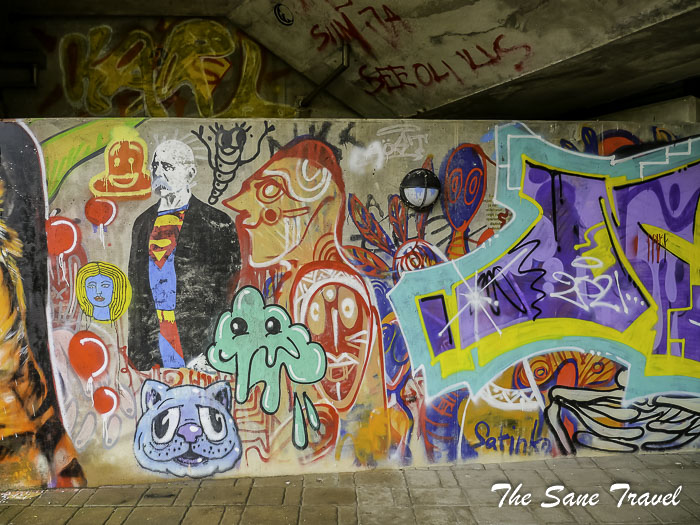
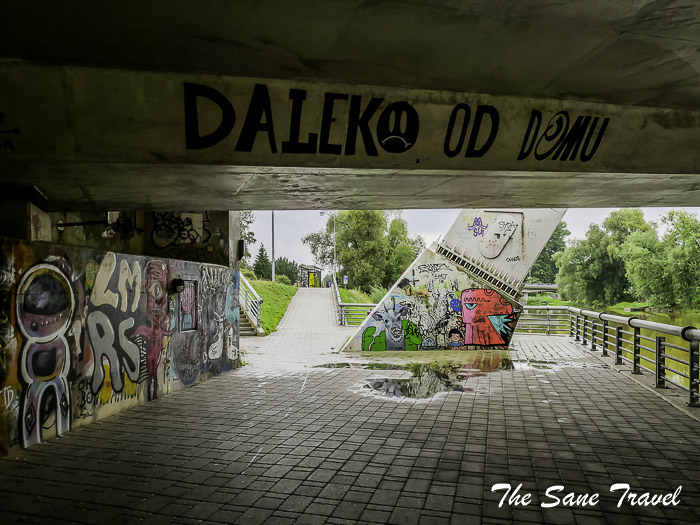
Karlova
The cosy and bohemian Karlova district is full of great street art. 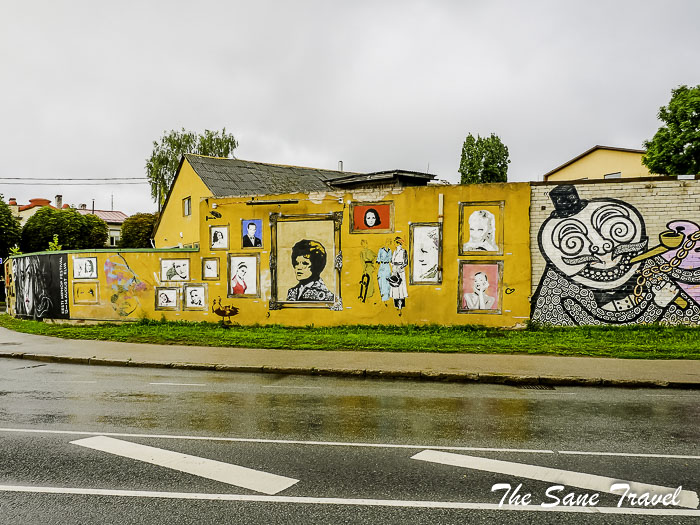
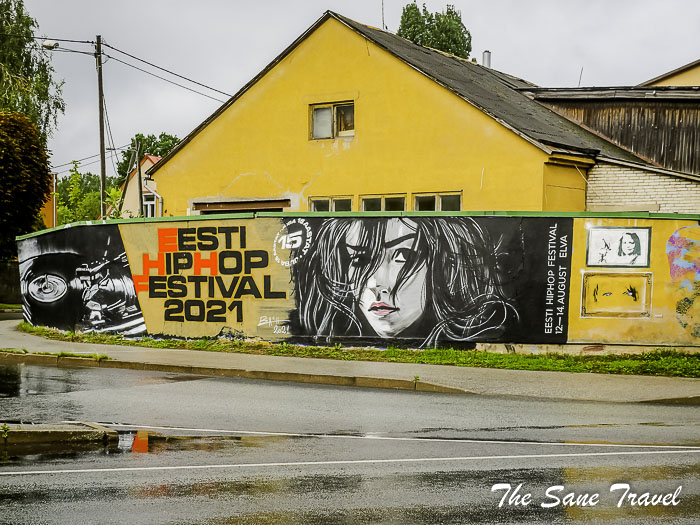
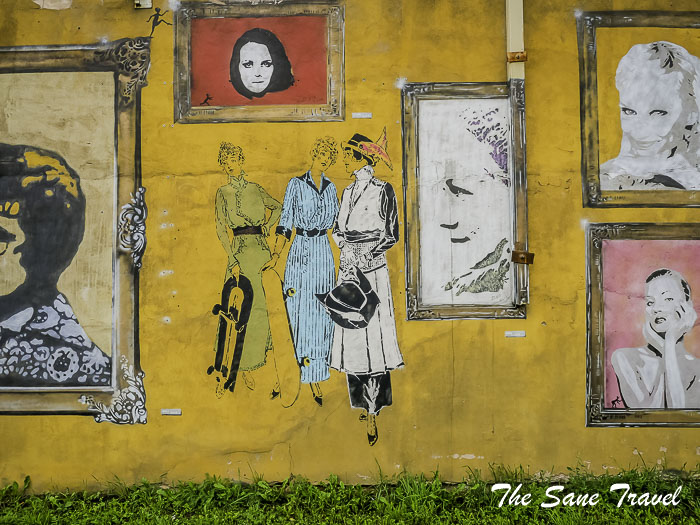 The district’s story begins with wooden houses being built on the lands of Karlova Manor in the late 19th and early 20th centuries. Thus, in addition to street art, the district is also unique thanks to wooden architecture, some of which has been given a new look, while others are still waiting for a new life.
The district’s story begins with wooden houses being built on the lands of Karlova Manor in the late 19th and early 20th centuries. Thus, in addition to street art, the district is also unique thanks to wooden architecture, some of which has been given a new look, while others are still waiting for a new life.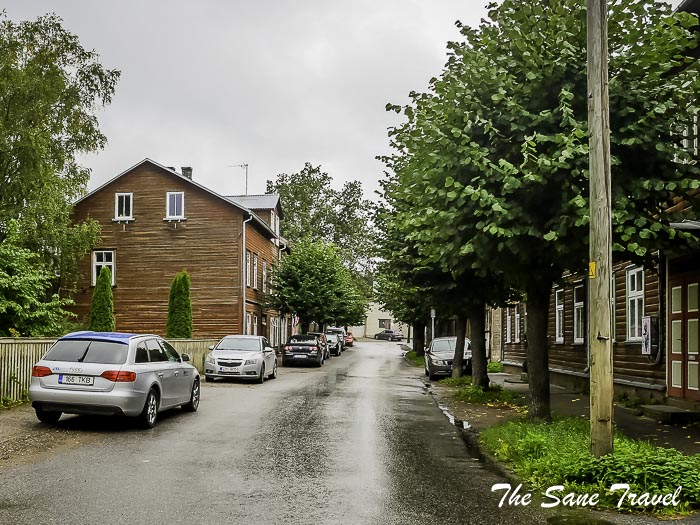 When in Karlova, take the time to pop into the creative centre Aparaaditehas or one of the cafés located there.
When in Karlova, take the time to pop into the creative centre Aparaaditehas or one of the cafés located there.
Aparaaditehas
The Widget Factory (Aparaaditehas) is an old factory complex. During Soviet times, the factory was used for manufacturing refrigeration equipment and secret submarine parts. Since 2014, the complex has been developed into a cultural hub. It slightly reminds me of a similar but larger Telliskivi Creative City complex located in Tallinn. Many creative entrepreneurs, artists, designers, and the factory cat Johannes Gutenberg have found their homes here. The factory offers trendy design and art shops, hipster restaurants, the TYPA Printing and Paper Art Centre, and a distinctive bookshop.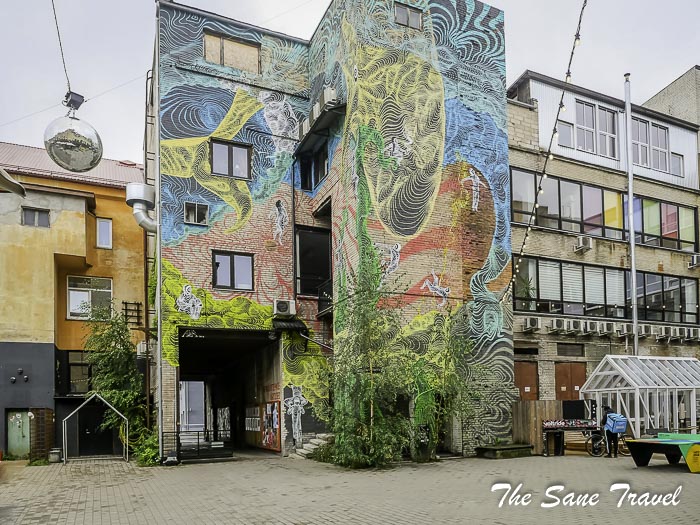
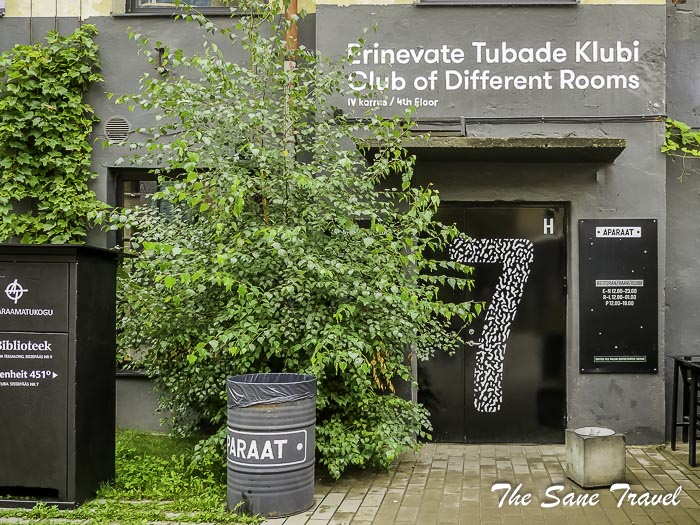
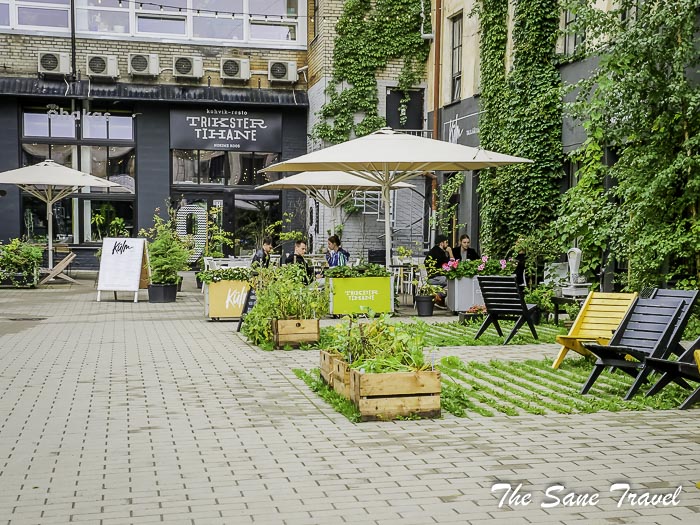 During summer, the courtyard is buzzing with music, markets, and even an outdoor cinema. However, Aparaaditehas is worth visiting throughout the year as it hosts a variety of different events every week such as concerts, workshops, parties, and exhibitions.
During summer, the courtyard is buzzing with music, markets, and even an outdoor cinema. However, Aparaaditehas is worth visiting throughout the year as it hosts a variety of different events every week such as concerts, workshops, parties, and exhibitions.
Supilinn
Supilinn district was built at the end of the 19th century when the water level of the Emajegi River declined, and then it was possible to sell the land in this area to poorer families. The area was and still has this bohemian vibe, and it gives you a nice village feeling with its quiet streets and wooden houses. 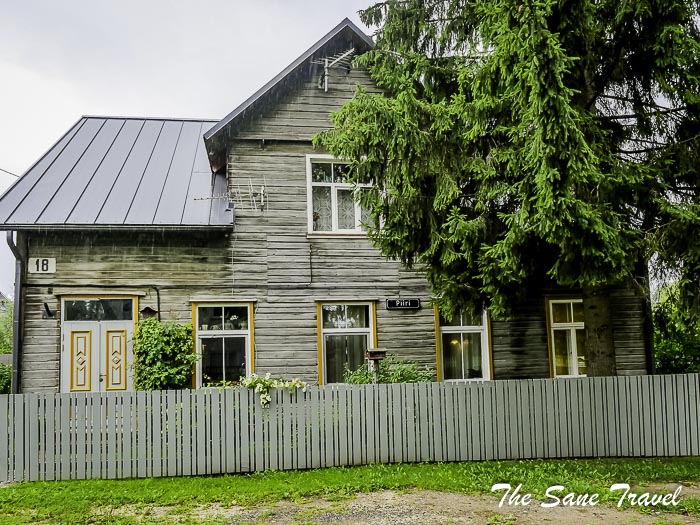 Strolling down the streets of Supilinn (’Soup town’) takes us back to another time, with all the pleasant backyards, greenery, and picket fences reminiscent of life in the previous centuries. You will find some murals there too.
Strolling down the streets of Supilinn (’Soup town’) takes us back to another time, with all the pleasant backyards, greenery, and picket fences reminiscent of life in the previous centuries. You will find some murals there too.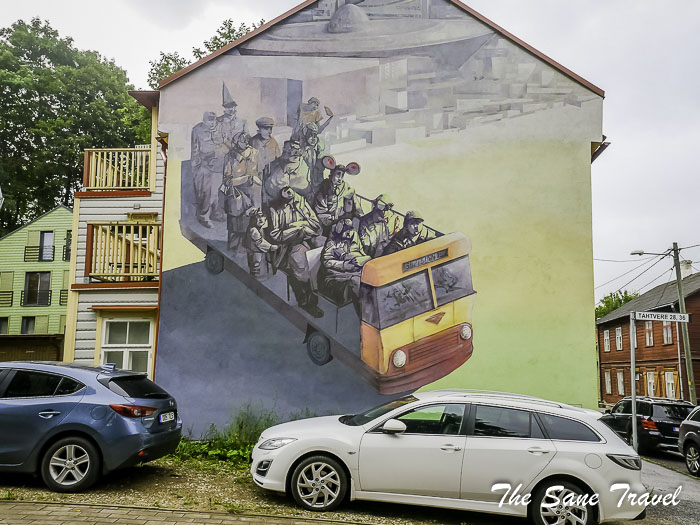
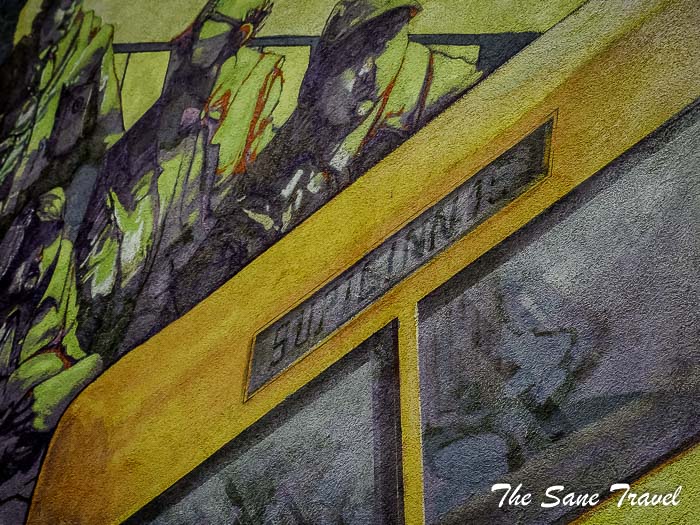 Check the vegetable street names of Supilinn: Herne (pea), Kartul (potato), Oa (bean), among others.
Check the vegetable street names of Supilinn: Herne (pea), Kartul (potato), Oa (bean), among others.
Monuments in Tartu
Tartu is rich with monuments to their notable people and historic events. I will mention just a few.
The memorial Kalevipoeg
It is dedicated to the soldiers who lost their lives in the War of Independence of Estonia. The memorial was taken down by the occupying power during Soviet times. It was restored in the early 21st century.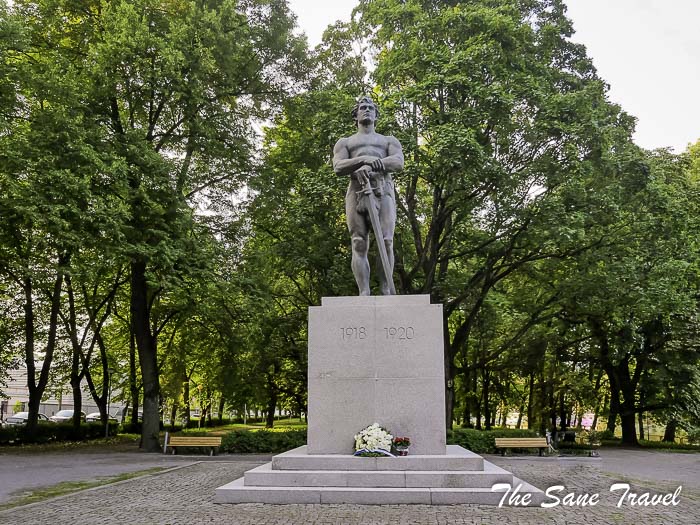 Location: in a park near the River Emajegi, behind the Tartu Public Library.
Location: in a park near the River Emajegi, behind the Tartu Public Library.
Monument to Karl Ernst von Baer
Karl Ernst von Baer (1792-1876) was a biologist, the founder of descriptive and comparative embryology, and an academician of the St Petersburg Academy of Sciences. He studied medicine in Tartu from 1810 to 1811 and obtained the degree of doctor of medicine there.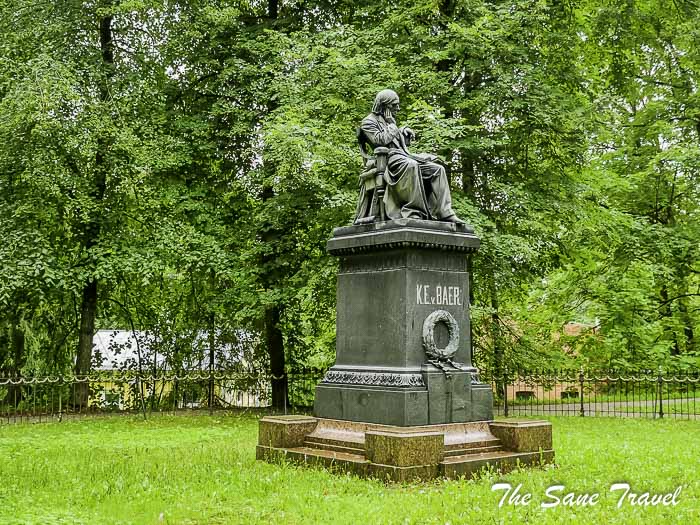 Location: Toomemäe Park.
Location: Toomemäe Park.
Monument to Kristian Jaak Peterson
Kristian Jaak Peterson (1801 –1822) was a poet and literary figure, one of the icons of Estonian culture. On his birthday, 14 March, Estonians celebrate Mother Tongue Day.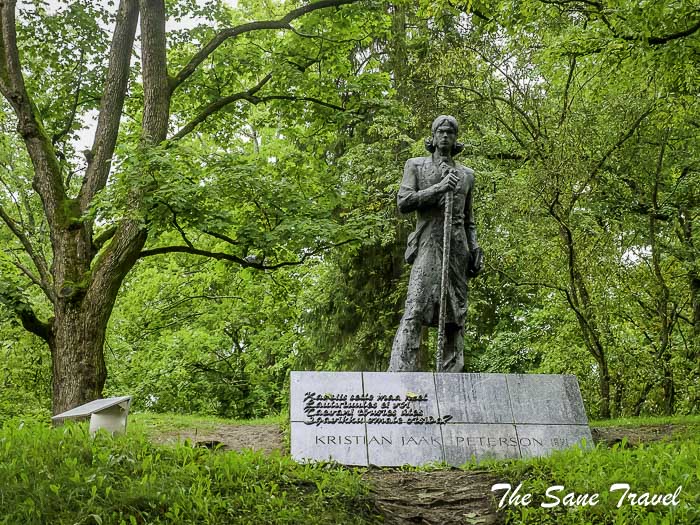 Location: Toomemäe Park.
Location: Toomemäe Park.
Places you can visit in Tartu that I did not see.
Science Centre AHHAA
More than 3 million people of different ages have visited their exhibitions and other science events. The centre aims to introduce science to everyone and encourage studying through the joy of discovery. In addition to trying out numerous ´hands-on´ exhibits on our various exhibitions, visitors of AHHAA can also take part in workshops; enjoy planetarium and science theatre shows. AHHAA welcomes visitors of all ages and offers a great opportunity to spend a fun day filled with science!
Estonian National Museum
The largest museum in Estonia with nearly 6,000 m² of exhibition space invites you to discover the everyday life of Estonians throughout history at the permanent exhibition ‘Encounters’ and to learn about the life of the Finno-Ugric people in the permanent exhibition ‘Echo of the Urals’. The museum also offers temporary exhibitions. The outdoor areas of the museum are perfect to have a picnic.
Like it? Pin it!
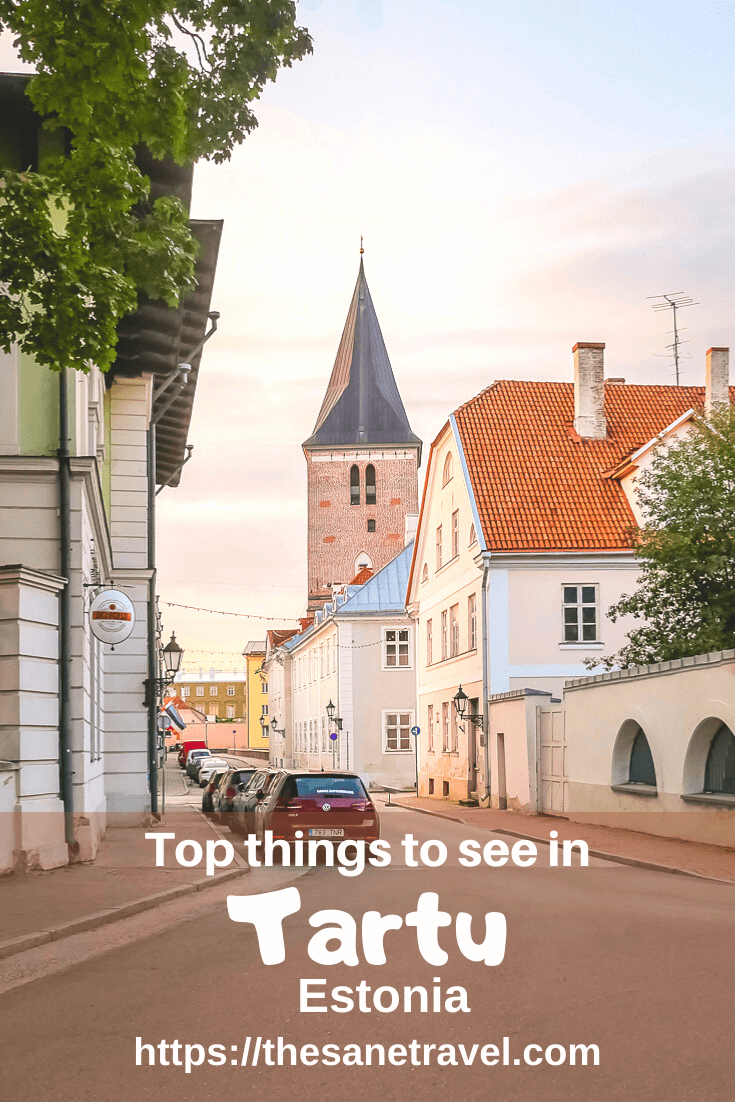
What did you think? Have you visited Estonia and Tartu? I’d love to hear from you so please add your comments below.
Author: Anita Sāne

About the author
Anita is a part-time traveller, passionate photographer and a retired career woman from Latvia, travelling mostly solo for more than 15 years. She is a skilled travel planner who plans and executes her travels by herself. Anita wants to show you how to travel the world and open your mind to new experiences. Follow her on Facebook, Instagram, Pinterest, Twitter and Bloglovin.

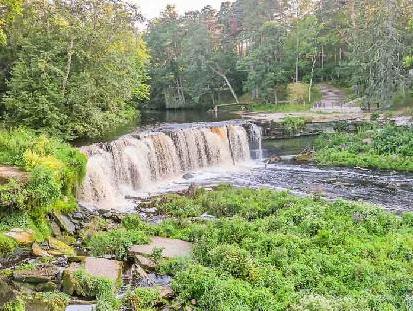

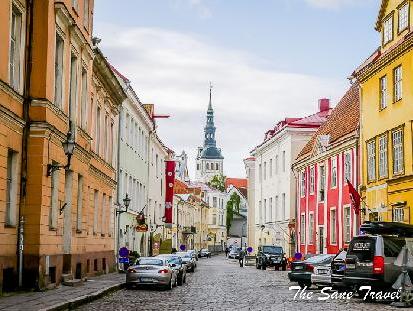
Report
My comments